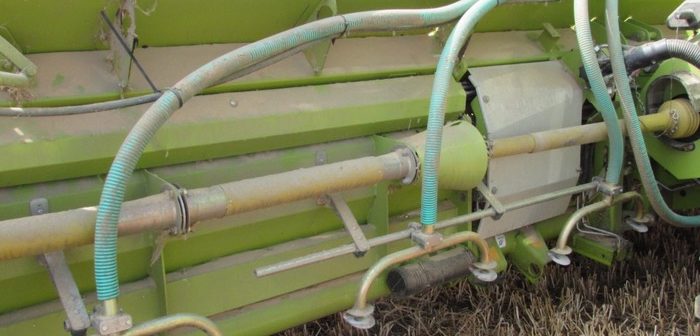Following a successful investment in the Autocast V2 Applicator in 2021 to establish the farms’ oilseed rape crop earlier and at significantly reduced cost, farmer Michael Gent, of G L Gent and Son, has now widened the use of the autocasting system to establish a new 2-year grass-free legume fallow designed to improve wildlife habitat and soil health on the 500ha mixed enterprise farm he runs, alongside his father John, near Oundle.
Mr Gent says: “Having successfully switched to autocasting in 2021 to get the rape away early and reduce some of our upfront costs, we were subsequently rewarded this summer with average yields of just over 3t/ha. Based on our light land, the final yield was easily in line with our historical average together with improved net profit margins based on reduced passes and lower fuel costs via the autocasting system.
“Following our January move into a Higher Tier Stewardship scheme, the next logical step was to use the Autocast V2 to apply an AB15 2-year legume fallow consisting of Vetch, Red Clover, Lucerne, Alsike Clover, Yellow Trefoil and Birdsfoot Trefoil to improve our soil health and provide an excellent entry for a first wheat planned for 2024.
Autocasting best method
“In my opinion, autocasting is the best application method for establishing most combinations of cover crops, given that they are best applied on the soil surface, rather than being drilled into the soil. Altering the set up on the Autocast V2 was quick and easy with just a minor adjustment to the width of the seed rolls to allow for the larger seeds in the legume, then simply adjusting the Techneat rate controller from 3.5kg/ha, where we were for rape, to 18kg/ha for the new legume mix.
“From the Autocast’s 200L hopper, seed is metered into an air-stream and accurately placed on the soil surface via twin-headed spreader plates spaced equally along the full width of the combine header. Once we’d autocasted the new legume, chopped straw covered the seed ready to conserve the moisture as we waited for the long overdue mid-August rain. After the rain had given us the required moisture, we rolled down tight – effectively sealing in the moisture beneath the straw to create a micro-climate enabling the new seedlings to quickly establish. Autocasting is a low cost, zero till, zero carbon application system and ticks all the key boxes for growers looking seriously at regenerative farming” he adds.
“When combining our Spring wheat, we also intend to use the Autocast V2 to establish an over-wintered cover crop mix of Linseed, Phacelia and Clover – again fulfilling the criteria within our new Higher Tier scheme. The new cover crop mix will improve our soil health and fix more nitrogen before we desiccate it and then look to establish a low-input Spring cereal crop in 2023.
“Our SW6 over-wintered cover crop option followed by an AB14 low input spring cereal option offers a good financial return of £362/ha before grain is even taken into account creating a healthy overall profit margin for both our business and for our contract farming customers” concludes Mr Gent.




